|
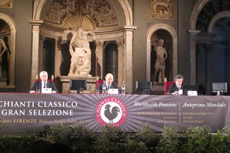 An official government Decree, the government wine law was passed on 29th January, 2014,creating a new category called Chianti Classico Gran Selezione wines. During the short time of 3 weeks, 47 samples were submitted out of which 39 were approved. Due to the logistical issues, only 35 labels from 33 wineries could be ready for presentation at the formal Launch on February 17 in the Salone dei Cinquecento (500) at the Palazzo Vecchio, one of the many grand edifices of Florence. An official government Decree, the government wine law was passed on 29th January, 2014,creating a new category called Chianti Classico Gran Selezione wines. During the short time of 3 weeks, 47 samples were submitted out of which 39 were approved. Due to the logistical issues, only 35 labels from 33 wineries could be ready for presentation at the formal Launch on February 17 in the Salone dei Cinquecento (500) at the Palazzo Vecchio, one of the many grand edifices of Florence.
The launch was in essence to enhance the brand image of Chianti Classico region and to showcase higher quality of wines, said Sergio Zingarelli, President of the Consortium of Chianti Classico producers (Consorzio). The new classification had been announced at last year’s Chianti Classico Collection event held annually at the Leopolda Station complex. The genesis of the Gran Selezione lies in several internal discussions for 3 years when Marco Pallanti, owner of Castello di Ama was the President of the Consorzio, said Zingarelli.
The launch and grand tasting was followed by a splendid dinner for a select gathering of around 300 in another palace at walking distance, The Palazzo Corsini where only the Gran Selezione Chianti Classico were served for tasting and drinking at the dinner that seemed to be never ending with so many wines and so little time!
The wines were also available at Leopolda over the next two days to the participants through the sommelier service which is now only too well recognised for excellent professional and personal service. (See Video for the Gran Selezione wines presented).
Selection of Chianti Classico Gran Selezione
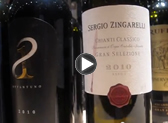 Stringent specs and controls have been laid out for a wine to be qualified as a Gran Selezione. Among many other chemical, organoleptic tests to be passed by the samples, the wines must be made from grapes grown within the estate. The minimum alcohol requirement is 13% as compared to the 12% for the regular Chianti Classico (called Annata) and 12.5% for Riserva. The solid extracts must not be less than 26 gms/l (Annata is prescribed 24 gms/liter and Riserva must have 25 gms/l or above). Stringent specs and controls have been laid out for a wine to be qualified as a Gran Selezione. Among many other chemical, organoleptic tests to be passed by the samples, the wines must be made from grapes grown within the estate. The minimum alcohol requirement is 13% as compared to the 12% for the regular Chianti Classico (called Annata) and 12.5% for Riserva. The solid extracts must not be less than 26 gms/l (Annata is prescribed 24 gms/liter and Riserva must have 25 gms/l or above).
Chianti Classico needs to be matured for 12 months or more and Riserva needs 24 months before it may be released. However Gran Riserva must be aged for at least 30 months. There is no change in the grape varieties that can be used in the blend-Sangiovese must still be a minimum of 80% (max. of 100%), the balance being specified grapes-both indigenous types like Canaiolo and the international varieties like Cabernet Sauvignon and Merlot.
In the samples submitted to the Commission so far, the minimum alcohol was 13.03%. But the maximum observed level of 15.52% might indicate a red flag, for the content being too much on the high side. Solid extract varied from 27.67gms/l to a maximum of 35.52 gms/l.
Gran Selezione - Calling Card for Chianti Classico
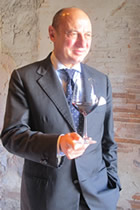 Although the production of the Gran Selezione will be around 8-9% of the total production of Chianti Classico, the Consorzio proposes it to be the calling card of Chianti Classico that will highlight the high quality. When I asked Sergio Zingarelli, President of the Consorzio, who had announced at the Chianti Classico Collection 2013 event at the Leopolda Station last year about the new proposed wine, whether it was their goal to be identified closer to the quality of Nobile Vino di Montepulciano and Brunello di Montalcino, the cousins produced from different clones of Sangiovese and known for high quality (Sangiovese strain is known as Prugnolo Gentile in Montepulciano and Brunello in Montalcino), he did not hesitate to admit that this would be the direction they have in mind, even though it would take many years to fructify. ’Please remember we have 600 individualist member producers. It is very difficult to get them to agree on something,’ he said politely. He was also quite receptive to my suggestion that perhaps they should differentiate the wine slightly from the regular Chianti Classico. Although the production of the Gran Selezione will be around 8-9% of the total production of Chianti Classico, the Consorzio proposes it to be the calling card of Chianti Classico that will highlight the high quality. When I asked Sergio Zingarelli, President of the Consorzio, who had announced at the Chianti Classico Collection 2013 event at the Leopolda Station last year about the new proposed wine, whether it was their goal to be identified closer to the quality of Nobile Vino di Montepulciano and Brunello di Montalcino, the cousins produced from different clones of Sangiovese and known for high quality (Sangiovese strain is known as Prugnolo Gentile in Montepulciano and Brunello in Montalcino), he did not hesitate to admit that this would be the direction they have in mind, even though it would take many years to fructify. ’Please remember we have 600 individualist member producers. It is very difficult to get them to agree on something,’ he said politely. He was also quite receptive to my suggestion that perhaps they should differentiate the wine slightly from the regular Chianti Classico.
Giovanni Manetti is the co-owner of Azienda Agricola Fontodi – a very highly respected family owned Chianti Classico producer. He is known for his legendry Flaccianello della Pieve-made from 100% Sangiovese. But besides his regular Chianti Classico, Vigna del Sorbo is made from 90% Sangiovese rounded off with 10% Cabernet Sauvignon. Made from the grapes from his own estate (Fontodi does not buy grapes anyway), this Chianti Classico Riserva docg qualifies to be a Gran Selezione and has been a part of the first band of 39 selected. Same is the case with Volpaia another well-regarded estate run in the village of Volpaia in Radda in Chianti by Giovanna Stianti Mascheron and assisted by her daughter Federica whom I have met on a couple of occasions in the winery before and who was the lead producer at our dinner table at the Corsini Palace. Their Chianti Classico il Puro Riserva Casanova 2010 - another 100% Sangiovese qualified to be named as a Gran Selezione - and as Federica explained, they chose not to change the front label due to its existing brand image and simply put ‘Gran Selezione’ as a part in the back label.
Gran Selezione and Future of Chianti Classico
How will the introduction of Gran Selezione affect the image of Chianti Classico, was the common question asked by everyone. Chianti Classico, besides being one of the most beautiful regions of Tuscany, has in general a better terrain and terroir and the quality of wines reflects it. But they have been bogged down by the confusion in the mind of buyers abroad as well as in the domestic market to some extent, regarding it as being the same or similar to Chianti docg which earned a bad reputation in the seventies for its cheap quality, the image of which persists. Several producers churning out cheap Chianti in price and quality is no help to the cause of Chianti Classico either. The better quality producers hope that this new classification will upgrade the quality image of Chianti Classico region in general.
With not much visible differentiation, it may be a marketing tool but with no visible impact due to product differentiation. As in the case of Fontodi and Volpaia, only two of the several examples available, the wine already has international acceptance with or without the Grand Selezione upgrade. According to some journalists, Antinori has simply chosen its Badia a Passignano 2009 and got approval as Gran Selezione and did not want to get the world popular Tignanello in that category as it does not feel the need to do so.
Should they not have changed the blend as differentiators? With the likes of Flaccianello having established their superiority, won’t it make sense to increase the Sangiovese content in the blend? President of the Consorzio, Sergio Zingarelli, who also owns Rocca delle Macie founded by his movie star father from Rome in the early seventies and who has also introduced a Sergio Zingarelli Gran Selezione 2010, agrees. ‘The general trend in Chianti Classico area has been to replace the existing vines with Sangiovese and over the last few years the surface area has been increasing. We can certainly consider increasing the percentage of Sangiovese in the blend in our specification,' he says.
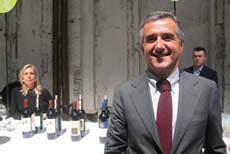 Manetti agrees with Zingarelli’s viewpoint . Already using 90% in Vigna del Sorbo and 100% Sangiovese in Flaccianello, he says,’ I feel there should be a minimum of 90% Sangiovese in Gran Selezione. But as Sergio says, we need to move ahead slowly taking all the producers with us.’ Manetti agrees with Zingarelli’s viewpoint . Already using 90% in Vigna del Sorbo and 100% Sangiovese in Flaccianello, he says,’ I feel there should be a minimum of 90% Sangiovese in Gran Selezione. But as Sergio says, we need to move ahead slowly taking all the producers with us.’
A few of the journalists also wonder about the selection of the commission itself. ‘The consumer tastes in the world are changing but the Consorzio does not seem to take cognizance of it. Look at Carlo Ferrini, the modern thinking winemaker who works with a lot of producers in Tuscany, and has not been included in the commission! An unverified statement, one hopes that the Consorzio would address the issue and ensure the commission has a balance of testers and tasters for the sample checks.
Chianti Classico has been finding, entering and growing in India as an uphill task due to the confusion and availability of cheaper Chianti and even Cheaper Chianti Riserva. It does not help Chianti Classico that Chianti is also a docg appellation, considered over-rated by many but created due to the political clout. Gran Selezione might help the hotels sell this wine, provided the prices are not jacked up by the producers who claimed generally that they had no such immediate plans.
Chianti Classico Collection 2014
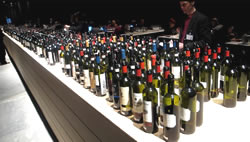 Chianti Classico has vines planted in about 6,500 hA of Tuscany. The 950 kms territory is divided into 9 distinct zones known as comunes. Castellina in Chianti is the biggest comune followed by Greve in Chianti and Castelnuova Berardenga. Wines from all these zones were showcased at the CCC. Chianti Classico has vines planted in about 6,500 hA of Tuscany. The 950 kms territory is divided into 9 distinct zones known as comunes. Castellina in Chianti is the biggest comune followed by Greve in Chianti and Castelnuova Berardenga. Wines from all these zones were showcased at the CCC.
Gran Selezione might have been the talking point at the Chianti Classico Collection 2014 but nevertheless the two fruitful and highly productive days on 18 and 19 February in the interactive company of producers (on 19th) and the brilliant sommelier service for private individual tasting, was a highlight of the ‘Tuscany Taste’ that came under the umbrella of the government-sponsored Toscana Promozione for the first time.
124 bottles of Chianti Classico docg 2012 and 2011 were offered for the tasting. In addition, one could also taste Chianti Classico docg 2010 (25 labels) and a few older vintages. Chianti Classico Riserva for 2011, 2010 and 2009 were showcased though a few from 2012 were served, some from barrel samples. A total of over 300 samples could keep the fastest of tasters for the two day period.
The consumers thronging in to taste the wines in the afternoon on the second day was proof enough that Chianti Classico lives very much in the hearts and palates of wine lovers in Florence.
Subhash Arora
Tasting with Producers
Tags: Chianti Classico, Chianti Classico Gran Selezione, Palazzo Vecchio, Florence, Sergio Zingarelli, Consortium of Chianti Classico, Palazzo Corsini, Consorzio, Chianti, Tuscany, Tuscany Taste, Toscana Promozione |